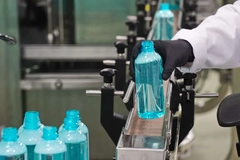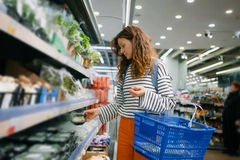Food Safety: Packaging From Recycled Cardboard May Transfer Unsafe Levels Of Mineral Oil
08 Mar 2011

Concerns that foods packed in material made of recycled cardboard may contain mineral oil above agreed limits are causing some food companies to change their packaging material, and in one UK company's case, to stop using recycled board altogether.
Concerns that foods packed in material made of recycled cardboard may contain mineral oil above agreed limits are causing some food companies to change their packaging material, and in one UK company's case, to stop using recycled board altogether.
Behind the concern is a recent report from Swiss government scientists who suggest foods like pasta, rice and breakfast cereals might contain up to 100 times more mineral oil than the limit agreed for food safety.
The concern surrounds mineral oils that come from ink used in newspapers and other printed materials that are used to make recycled cardboard.
Studies on laboratory animals have highlighted possible risks to health of ingesting too much mineral oil.
In a brief news item Dr Koni Grob, who has led the research at the government-run food safety laboratory of the Canton of Zurich, said exposure to mineral oils has been linked to inflammation of internal organs and cancer.
He said food safety experts talk about two effects, one is the "chronic inflammation of various internal organs and the other one is cancer".
In one paper Grob and colleagues described the potential for mineral oils to transfer from the cardboard packaging into food as "frightening".
In a study they carried out at the behest of the German ministry for food in 2010, they tested 119 products on sale in German supermarkets.
Grob said that only about 30 of the 119 sampled products were free of mineral oil, while the others all exceeded the limit. Most went over it more than 10 times, he said.
Grob said they also estimated that in the longer term most would probably go over it 50 times on average and many by several hundred times.
Some UK manufacturers have already said they have either stopped using recycled cardboard in food packaging, or are changing to materials with less mineral oil, even though the Food Standards Agency has not yet ruled on the matter.
Recycled cardboard is cheaper to produce compared to the alternative, called "virgin board" which is made from newly felled trees. Over half of the cardboard used in Europe is from recycled materials.
However, the food safety authorities in Switzerland said people who eat a healthy balanced diet with a variety of foods should not be worried about this finding.
In their research, Grob and colleagues found that the mineral oil can get into the food even if it is contained in an inner bag, and that the longer the package stays on the shelf, the more mineral oil transfers from the cardboard to the food.
The Food Standards Agency (FSA) in the UK is doing its own research, but apparently this is only looking at the mineral oil content of the packaging and not what ends up in the food.
The acting head of the agency's chemical safety division, Terry Donohoe said that they were also carrying out a risk assessment, and should there be any evidence, they will "take immediate action to protect the public".
In a paper Grob and colleagues Maurus Biedermann and Yoko Uematsu wrote that was published online in the Packaging and Technology Science journal in September 2010, they said newspapers, and leaflets printed using the same technology, were the main sources of mineral oil in recycled board, and office paper, books and corrugated board were the starting materials with the lowest mineral oil content.
However, they also noted that even if the recycled board contained more of the latter, which would result in five times less mineral oil than the average seen today: "... the migration into food could still exceed the limit derived from the available acceptable daily intake by a factor of up to 20".
The agreed limit, contained in European legislation that covers plastic packaging, for mineral oil saturated hydrocarbons is 0.6 mg per kg.
In that study, Grob and colleagues looked at the mineral oil content of European newspapers produced by offset printing and found they contained on average 4.1mg/kg of the type of saturated and aromatic mineral oil hydrocarbons that can get into food.
Although not suggesting that this is the concentration that ends up in the food, it gives us an idea of the starting point levels of the potential contaminants.
Source: Packaging Technology and Science
The concern surrounds mineral oils that come from ink used in newspapers and other printed materials that are used to make recycled cardboard.
Studies on laboratory animals have highlighted possible risks to health of ingesting too much mineral oil.
In a brief news item Dr Koni Grob, who has led the research at the government-run food safety laboratory of the Canton of Zurich, said exposure to mineral oils has been linked to inflammation of internal organs and cancer.
He said food safety experts talk about two effects, one is the "chronic inflammation of various internal organs and the other one is cancer".
In one paper Grob and colleagues described the potential for mineral oils to transfer from the cardboard packaging into food as "frightening".
In a study they carried out at the behest of the German ministry for food in 2010, they tested 119 products on sale in German supermarkets.
Grob said that only about 30 of the 119 sampled products were free of mineral oil, while the others all exceeded the limit. Most went over it more than 10 times, he said.
Grob said they also estimated that in the longer term most would probably go over it 50 times on average and many by several hundred times.
Some UK manufacturers have already said they have either stopped using recycled cardboard in food packaging, or are changing to materials with less mineral oil, even though the Food Standards Agency has not yet ruled on the matter.
Recycled cardboard is cheaper to produce compared to the alternative, called "virgin board" which is made from newly felled trees. Over half of the cardboard used in Europe is from recycled materials.
However, the food safety authorities in Switzerland said people who eat a healthy balanced diet with a variety of foods should not be worried about this finding.
In their research, Grob and colleagues found that the mineral oil can get into the food even if it is contained in an inner bag, and that the longer the package stays on the shelf, the more mineral oil transfers from the cardboard to the food.
The Food Standards Agency (FSA) in the UK is doing its own research, but apparently this is only looking at the mineral oil content of the packaging and not what ends up in the food.
The acting head of the agency's chemical safety division, Terry Donohoe said that they were also carrying out a risk assessment, and should there be any evidence, they will "take immediate action to protect the public".
In a paper Grob and colleagues Maurus Biedermann and Yoko Uematsu wrote that was published online in the Packaging and Technology Science journal in September 2010, they said newspapers, and leaflets printed using the same technology, were the main sources of mineral oil in recycled board, and office paper, books and corrugated board were the starting materials with the lowest mineral oil content.
However, they also noted that even if the recycled board contained more of the latter, which would result in five times less mineral oil than the average seen today: "... the migration into food could still exceed the limit derived from the available acceptable daily intake by a factor of up to 20".
The agreed limit, contained in European legislation that covers plastic packaging, for mineral oil saturated hydrocarbons is 0.6 mg per kg.
In that study, Grob and colleagues looked at the mineral oil content of European newspapers produced by offset printing and found they contained on average 4.1mg/kg of the type of saturated and aromatic mineral oil hydrocarbons that can get into food.
Although not suggesting that this is the concentration that ends up in the food, it gives us an idea of the starting point levels of the potential contaminants.
Source: Packaging Technology and Science
All content and features on this website are copyrighted with all rights reserved. The full details can be found in our privacy statement
Subscribe to our newsletters
By continuing to browse our site you agree to our Privacy Statement











